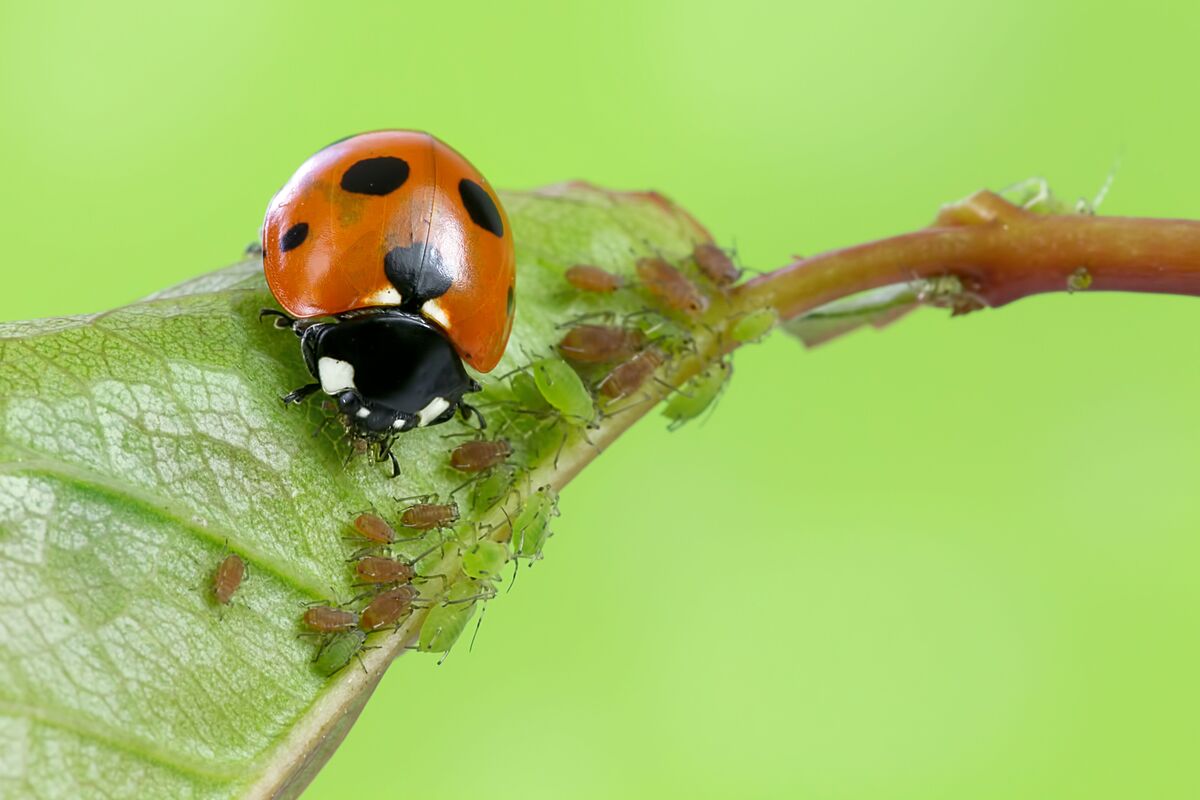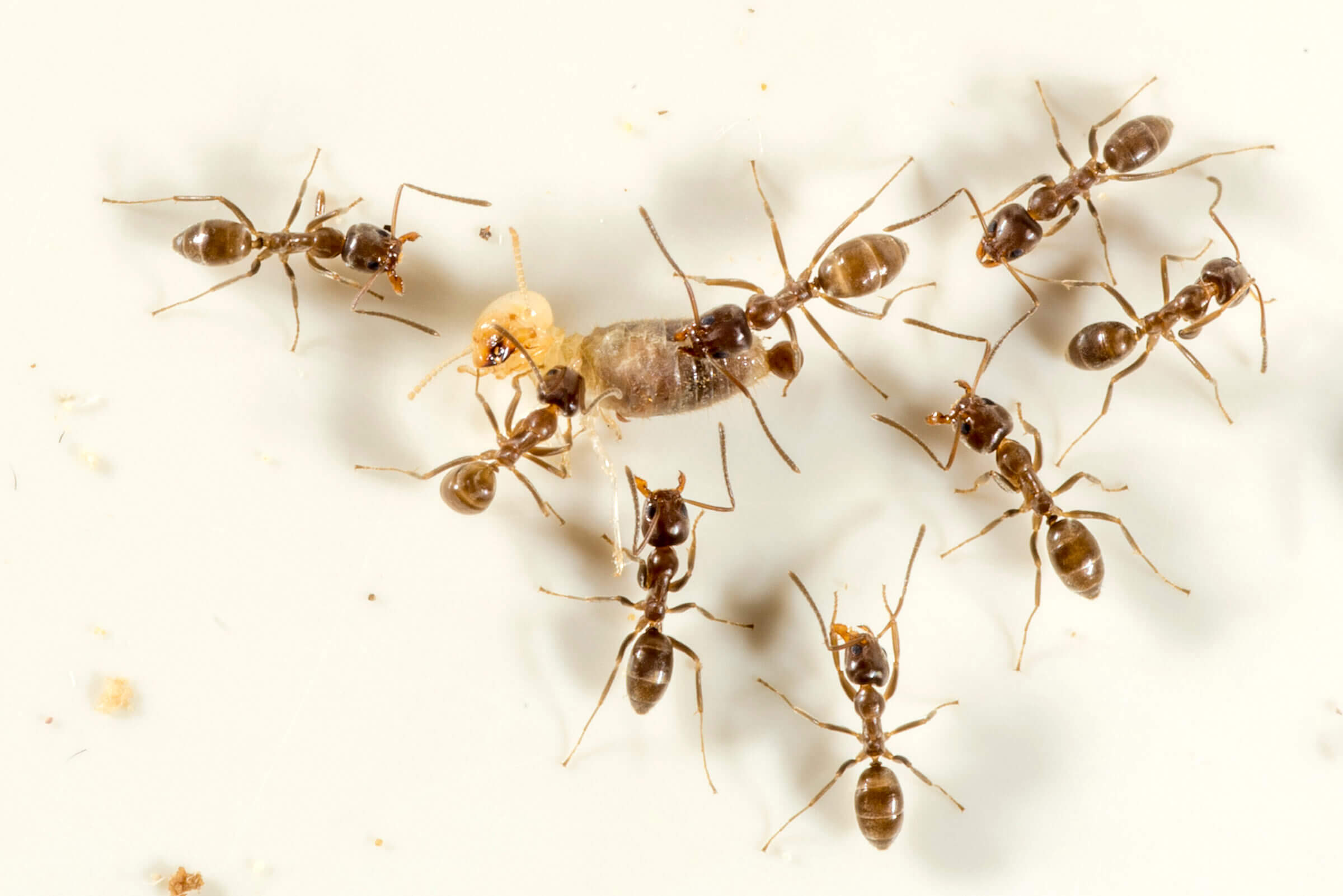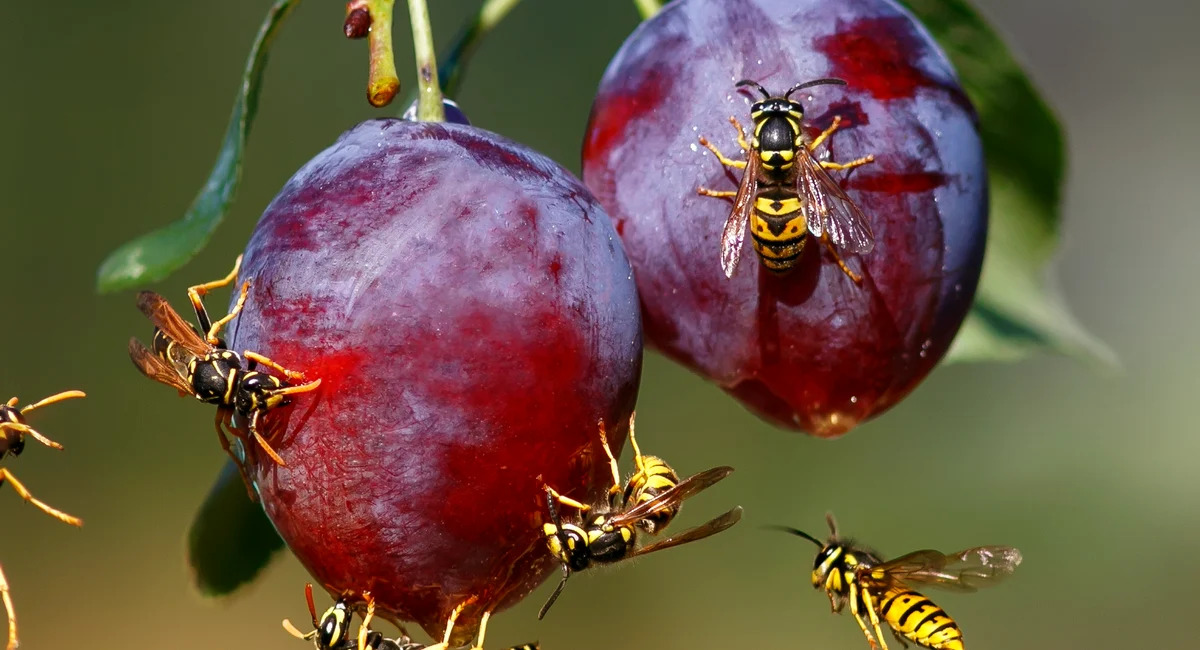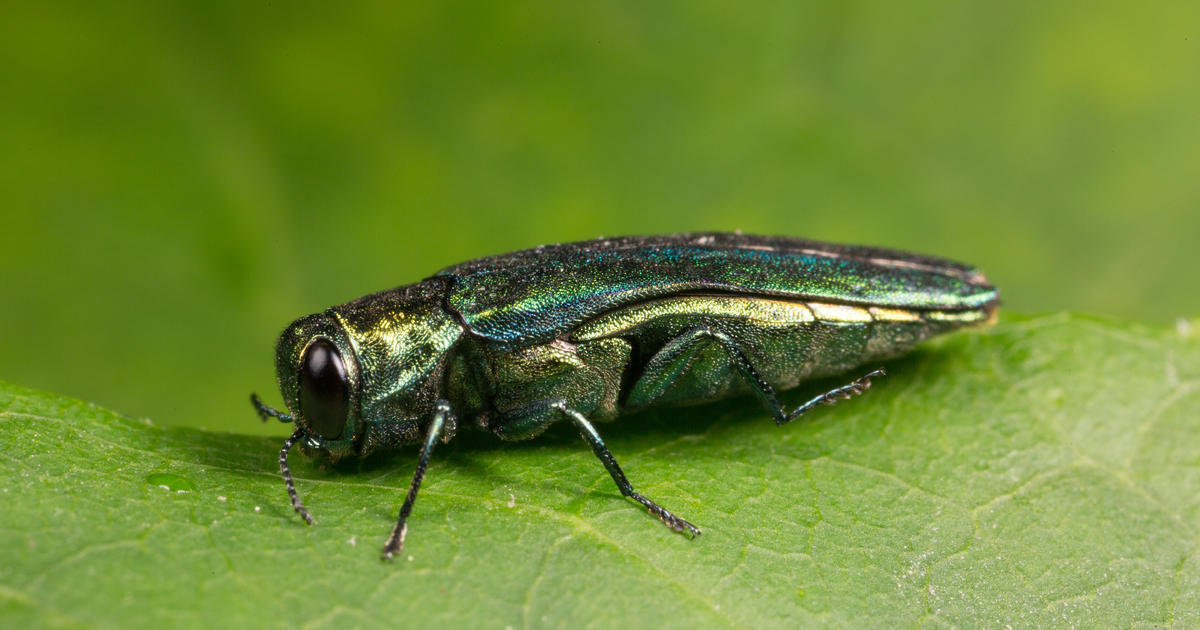Home>Gardening News and Trends>Latest News>Eating Insects Is Known As What?


Latest News
Eating Insects Is Known As What?
Modified: January 22, 2024
Discover the Latest News on Eating Insects and Learn Why It's Considered a Sustainable and Nutritious Food Source
(Many of the links in this article redirect to a specific reviewed product. Your purchase of these products through affiliate links helps to generate commission for Chicagolandgardening.com, at no extra cost. Learn more)
Table of Contents
Introduction
As the world population continues to grow and resources become increasingly scarce, the search for sustainable sources of food becomes more crucial than ever. One unconventional solution that is gaining attention is the practice of eating insects, also known as entomophagy. At first glance, the idea of consuming insects may seem strange or even repulsive to many people, but it has been a part of human diets and cultures throughout history. In fact, more than 2 billion people worldwide currently include insects in their regular meals.
The concept of eating insects has been met with both fascination and skepticism. However, there are numerous reasons why it is gaining traction as a viable food option. Not only are insects incredibly abundant and easy to rear, but they also offer a range of benefits that make them an attractive alternative to traditional meat sources. Additionally, from a nutritional standpoint, insects are packed with essential nutrients, making them a potentially valuable food source to combat malnutrition and food insecurity.
From a culinary perspective, insects can be incorporated into a variety of dishes and cuisines, adding unique flavors and textures. In some cultures, they are considered delicacies and are valued for their distinct taste. Western countries are slowly starting to explore the culinary possibilities with insects, with chefs experimenting with creative ways to incorporate them into their menus.
However, the acceptance and adoption of insect consumption face several challenges. Cultural taboos, lack of awareness, and inadequate regulations are some of the main obstacles that need to be addressed. Additionally, there are ethical and environmental concerns associated with large-scale insect farming.
In this article, we will delve into the world of eating insects and explore the various aspects surrounding this practice. We will examine the benefits of consuming insects, including their nutritional value and minimal environmental impact. We will also explore the cultural perspectives and challenges associated with embracing entomophagy. By the end of this article, you will have a better understanding of why eating insects is being considered as a potential solution to our global food challenges.
Benefits of Eating Insects
Eating insects offers a range of benefits that make them a promising solution to the world’s food security and environmental concerns. Here are some key advantages:
- Sustainable and Efficient: Insects are incredibly abundant and have a high reproduction rate, making them a highly sustainable source of food. They require minimal resources such as water, land, and feed, compared to traditional livestock. Insects also have a higher feed conversion efficiency, meaning they can convert the food they consume into body mass more efficiently than conventional livestock. This efficiency contributes to reducing greenhouse gas emissions and mitigating the environmental impact of food production.
- Nutritious Powerhouses: Insects are packed with nutrients, making them a valuable addition to a balanced diet. They are rich in protein, containing all nine essential amino acids required by the human body. In fact, certain insect species have a higher protein content than traditional meat sources such as beef, chicken, and pork. Additionally, insects are also a good source of healthy fats, vitamins, minerals, and fiber.
- Addressing Malnutrition and Food Insecurity: Insects have the potential to combat malnutrition and food insecurity, particularly in resource-limited regions. They can provide a cheap and accessible source of essential nutrients, especially for vulnerable populations such as children and pregnant women. Insect protein and other nutrients can help bridge the nutrition gap and contribute to healthier diets in areas where access to meat and other protein sources is limited.
- Diverse Culinary Options: Incorporating insects into our diets opens up a whole new world of culinary possibilities. Insects can be used in various forms, from whole insects to insect-based ingredients like cricket flour. They offer unique flavors and textures, adding a new dimension to dishes. Chefs and food enthusiasts have already started exploring innovative ways to incorporate insects into traditional recipes, creating exciting and delicious culinary experiences.
- Reduced Environmental Impact: The livestock industry is a major contributor to deforestation, water pollution, and greenhouse gas emissions. In contrast, insect farming requires significantly less land and water resources. Insects also produce fewer greenhouse gases such as methane compared to traditional livestock. By shifting towards insect consumption, we can reduce the strain on ecosystems and mitigate the environmental impact of food production.
These benefits highlight the potential of insects as a sustainable and nutritious food source. As we explore the possibilities of incorporating insects into our diets, it is essential to consider their role in addressing food security, promoting environmental sustainability, and improving global health and nutrition.
Culinary Uses of Insects
While the idea of eating insects may be novel to some, various cultures around the world have been incorporating insects into their culinary traditions for centuries. In recent years, there has been a growing interest in exploring the diverse culinary uses of insects. Here are some of the common ways insects are utilized in the kitchen:
Whole Insects: In many cultures, insects are prepared and served as whole creatures. They can be deep-fried, roasted, or sautéed to add crunchiness and unique flavors. Crispy fried crickets or delicately seasoned mealworms can be enjoyed as snacks or used as toppings for salads, stir-fries, and tacos.
Insect Powder or Flour: Insect powders or flours have gained popularity as a versatile ingredient. Mealworm or cricket flours, for example, can be used as a substitute for traditional flours in baking recipes such as bread, cookies, or pancakes. These insect-based flours add earthy flavors, enhance protein content, and offer a nutritional boost to the final product.
Sauces and Seasonings: Insects can be transformed into flavorful sauces and seasonings. For instance, ants are sometimes used to make tangy and citrusy sauces. Insect-based seasonings such as cricket salt or mealworm spice blends can add a unique umami taste to dishes and elevate their overall flavor profile.
Infused Oils and Butters: Insect-infused oils and butters are another way to incorporate insects into cooking. Insects like grasshoppers or crickets can be roasted and ground before being mixed with oils or melted butter. These infused oils and butters can be used in various recipes, adding an extra layer of richness and a hint of nutty flavor.
Protein-Rich Ingredients: Insect proteins can be processed and used as ingredients in a wide range of products. Cricket protein, for example, can be used to make protein bars, protein shakes, or even alternative meat products. These protein-rich ingredients offer a sustainable and nutritious alternative to traditional protein sources, with the added benefit of being lower in fat and higher in fiber.
As the culinary world continues to explore the potential of insects as an ingredient, chefs and food enthusiasts are pushing the boundaries and creativity in incorporating insects into both traditional and innovative recipes. The versatility and distinct flavors of insects open up new sensory experiences for those willing to explore the culinary uses of this sustainable food source.
Nutritional Value of Insects
Insects are not only a sustainable food source but also a highly nutritious one. While the nutritional composition can vary depending on the insect species, here are some general insights into the nutritional value of insects:
Protein: Insects are rich in protein, making them an excellent source of this essential macronutrient. The protein content in insects can range from 20% to 70% of their dry weight, depending on the species. This makes insects comparable to or even higher in protein content than traditional meat sources such as beef, chicken, and pork. The presence of all nine essential amino acids in insect protein further enhances their nutritional value, as these amino acids are crucial for the proper functioning of the human body.
Fats: Insects contain varying amounts of fats, including both saturated and unsaturated fats. The fat content in insects ranges from 5% to 50% of their dry weight. In general, the fat composition of insects is healthier compared to traditional meat sources, with higher proportions of unsaturated fats, including omega-3 and omega-6 fatty acids. These polyunsaturated fats are essential for brain function, heart health, and reducing inflammation in the body.
Vitamins and Minerals: Insects can provide an array of vitamins and minerals essential for maintaining optimal health. They are a good source of vitamins such as riboflavin (B2), niacin (B3), and vitamin B12. These vitamins play essential roles in energy production, metabolism, and the formation of red blood cells. In terms of minerals, insects contain valuable amounts of iron, calcium, zinc, and magnesium. Iron is essential for transporting oxygen in the blood, calcium is crucial for bone health, zinc supports immune function, and magnesium is involved in various biochemical processes in the body.
Fiber: Insects also offer dietary fiber, which is essential for a healthy digestive system. The fiber content in insects varies, with certain species such as mealworms containing high amounts of fiber. Consuming insects rich in fiber can contribute to supporting regular bowel movements, maintaining a healthy gut microbiome, and reducing the risk of chronic diseases such as obesity, diabetes, and heart disease.
It is important to note that the nutritional composition of insects can vary depending on various factors, including the insect species, developmental stage, diet, and rearing methods. Therefore, it is necessary to consider these factors when evaluating the specific nutritional value of insects.
Overall, insects have a remarkable nutritional profile, offering a rich source of protein, healthy fats, vitamins, minerals, and dietary fiber. Their nutrient density, combined with their sustainability and environmental advantages, makes them a promising alternative to traditional food sources that can contribute to addressing global health and nutrition challenges.
Environmental Impact of Insect Consumption
One of the key advantages of insect consumption is its minimal environmental impact compared to traditional livestock production. Here are some significant ways in which eating insects can contribute to sustainability:
Land Use: Insects require significantly less land compared to conventional livestock. For example, producing a kilogram of beef requires approximately 10 times more land compared to producing a kilogram of crickets. With the increasing demand for agricultural land, especially for livestock feed production, shifting towards insect consumption can help reduce deforestation and habitat destruction.
Water Usage: Insects have a remarkably low water footprint compared to traditional livestock. Rearing insects requires only a fraction of the water used for cattle or poultry farming. Insects are more efficient at converting feed to body mass and therefore require less water for their growth and metabolism. This reduced water usage can help alleviate water scarcity issues that many regions face due to increased demands from agriculture and population growth.
Greenhouse Gas Emissions: The livestock industry is a significant contributor to greenhouse gas emissions, particularly methane, which has a potent warming effect. Insects, on the other hand, produce significantly lower amounts of methane and other greenhouse gases. The lower emission levels in insect farming contribute to mitigating climate change and reducing the environmental burden associated with livestock production.
Feed Conversion Efficiency: Insects have a higher feed conversion efficiency compared to traditional livestock. They can convert the feed they consume into body mass more efficiently, requiring fewer resources to produce the same amount of protein. Insects generally need less feed, land, and water to produce the same weight of protein as livestock. This efficiency contributes to reducing resource depletion, lowering the environmental impact of food production, and improving overall sustainability.
Reduced Waste: Insects have the potential to contribute to the reduction of organic waste through bioconversion. They can be fed with organic waste materials such as food scraps, agricultural byproducts, or even manure. Feeding insects with these waste products not only reduces landfill waste but also creates a valuable nutrient-rich insect biomass that can be utilized as animal feed or fertilizer.
By embracing insect consumption, we can harness the environmental benefits associated with a more sustainable food system. The lower land and water requirements, reduced greenhouse gas emissions, and increased feed conversion efficiency contribute to a more eco-friendly approach to food production and consumption.
Cultural Perspectives on Eating Insects
Eating insects is not a new concept in many cultures around the world. In fact, insects have been part of human diets and culinary traditions for centuries. Here are some cultural perspectives on insect consumption:
Asia: In many Asian countries, such as Thailand, Cambodia, and Vietnam, insects have long been part of traditional cuisine. They are commonly sold in local markets and enjoyed as snacks or incorporated into various dishes. Fried crickets, silk larvae, and water beetles are just a few examples of insects that are embraced as delicious and nutritious food options in these cultures.
Africa: In many African communities, insects have been a staple food source for generations. Caterpillars, termites, and crickets are among the most commonly consumed insects across the continent. Not only do they provide essential nutrients, but they also serve as a valuable source of income and food security for many rural communities.
Latin America: In Mexico, insects such as grasshoppers, ant eggs, and agave worms have significant cultural importance and are deeply embedded in traditional cuisine. They are often featured in dishes like tacos, tamales, or as toppings for guacamole. In countries like Colombia and Peru, roasted ants are considered a delicacy, enjoyed for their unique flavor and crunchy texture.
Indigenous Cultures: Many indigenous cultures across the globe have a deep knowledge and appreciation for insects as a food source. For instance, the Aboriginal people in Australia have a tradition of foraging and consuming witchetty grubs as part of their cultural heritage. Insects hold spiritual meaning and are often seen as symbols of sustenance and connection to the land in indigenous communities.
However, it is essential to acknowledge that insect consumption is not universally accepted in all cultures. In some cultures, there may be certain taboos or aversions associated with eating insects. These cultural perceptions can vary widely and are influenced by factors such as tradition, upbringing, and personal preferences.
As the interest in entomophagy grows, there is a growing movement to promote insects as a sustainable and culturally rich food source. Education and awareness programs aim to challenge stigmas and highlight the potential of insects in addressing global food challenges. Chefs and food entrepreneurs are also exploring innovative ways to incorporate insects into mainstream cuisine, bridging the gap between cultural traditions and contemporary dining experiences.
Understanding and appreciating the cultural perspectives on eating insects is essential as we navigate the journey towards a more sustainable and inclusive food system. By embracing the diverse culinary traditions and cultural values surrounding insects, we can promote the acceptance and integration of insects as a valuable food source for a brighter and more sustainable future.
Challenges and Criticisms of Insect Consumption
While there are many potential benefits to eating insects, there are also several challenges and criticisms associated with insect consumption. These include:
Cultural Taboos and Perception: In many Western societies, the thought of eating insects is still met with a sense of aversion or disgust. Cultural taboos and deeply ingrained perceptions about which animals are considered acceptable for consumption can be difficult to overcome. Overcoming these barriers requires education, awareness, and changing societal attitudes towards insects as a viable food source.
Lack of Awareness and Accessibility: Insect consumption is still relatively unknown to many people outside cultures where it is traditionally practiced. Limited awareness and availability of insect-based products or ingredients in mainstream markets make it challenging for individuals to incorporate insects into their diet. Increasing awareness and making insect-derived products more accessible will be crucial in promoting wider acceptance and adoption of insects as food.
Inadequate Regulations and Standards: As the interest in insect consumption grows, there is a need for clear regulations and standards to ensure the safety and quality of insect-derived products. Currently, there is a lack of harmonized regulations and guidelines governing the rearing, processing, and labeling of insects for food purposes. Establishing robust regulations and standards will be vital in ensuring the safety and transparency of insect-based food products.
Ethical Concerns: There are ongoing discussions about the ethical considerations surrounding insect farming and harvesting methods. Some argue that insects deserve ethical considerations as sentient beings and question the welfare conditions and practices involved in large-scale insect farming. It is essential to address these concerns and develop responsible and ethical practices as the industry continues to develop.
Environmental Impact of Large-Scale Farming: While insect farming can be more environmentally friendly than traditional livestock farming, large-scale insect farming can still have negative environmental impacts. Issues such as habitat destruction, excessive resource use, and potential pollution from waste management need to be carefully managed to ensure that insect production remains sustainable and minimally harmful to the environment.
Food Safety and Allergies: Like any other food product, there are considerations regarding food safety and potential allergenicity associated with insect consumption. Proper hygiene, processing, and storage practices need to be implemented to prevent the risk of contamination and ensure consumer safety. Additionally, individuals with allergies to shellfish or dust mites may be at risk of cross-reactivity with certain insects, and hence should exercise caution when consuming insects.
Addressing these challenges and criticisms requires collaboration between policymakers, industry stakeholders, and consumers. Continued research, education, and advancements in farming practices and regulations will be important in moving towards a more sustainable and widely accepted insect-based food system.
Conclusion
Exploring the world of eating insects reveals a sustainable and nutritious solution to the global challenges of food security and environmental sustainability. While the idea of consuming insects may still face cultural barriers and criticisms, there is a growing recognition of the benefits that insects offer as a food source.
The nutritional value of insects, with their high protein content, healthy fats, vitamins, minerals, and dietary fiber, makes them a valuable addition to a balanced diet. Insects also have a minimal environmental impact, requiring less land, water, and resources compared to traditional livestock. Their high feed conversion efficiency and lower greenhouse gas emissions contribute to mitigating climate change and reducing pressure on ecosystems.
Cultural perspectives on eating insects vary widely, with traditional consumption deeply rooted in many societies. However, increasing awareness and promoting acceptance of insects as food will be essential for their wider adoption. Addressing regulatory standards, ethical considerations, and food safety concerns are crucial steps towards establishing a sustainable and responsible insect-based food industry.
The challenges and criticisms of insect consumption should not deter us from exploring the potential of this alternative food source. Rather, they should serve as areas for improvement, prompting further research, responsible practices, and inclusive dialogue among stakeholders.
As we navigate the complexities surrounding insect consumption, it is essential to recognize the cultural diversity and the rich traditions associated with eating insects. By appreciating the culinary heritage of different cultures, coupled with innovation and creativity in the kitchen, we can create a more sustainable and inclusive food system that embraces the benefits of insects.
In conclusion, incorporating insects into our diets represents a promising pathway towards achieving food security, improving nutrition, and mitigating the environmental impacts of traditional livestock production. Embracing insects as an alternative food source allows us to broaden our perspectives, challenge societal norms, and contribute to a more sustainable and resilient future for generations to come.










